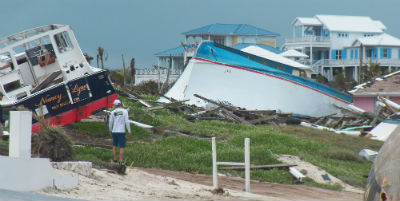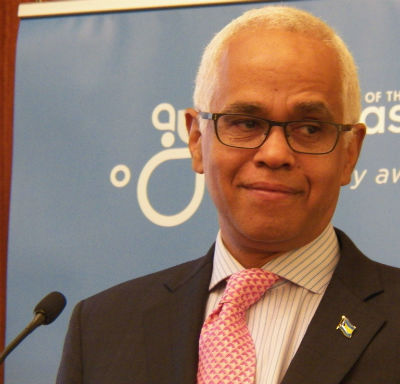THE BAHAMAS - “We are a resilient people; we will rebuild.” That’s the mantra of the people of The Bahamas, particularly those from the northern part of the Caribbean nation most severely affected by Hurricane Dorian.
 Bahamians are still picking up the pieces after Hurricane Dorian. Photograph by DAWN A. DAVISThe Category 5 storm ripped into the Abaco and Grand Bahama islands early September, leaving 70 confirmed dead up to press time and an estimated $3.4 billion in damages.
Bahamians are still picking up the pieces after Hurricane Dorian. Photograph by DAWN A. DAVISThe Category 5 storm ripped into the Abaco and Grand Bahama islands early September, leaving 70 confirmed dead up to press time and an estimated $3.4 billion in damages.
Almost six months later, the stories of those who suffered most may no longer be front page news, but many tell of a people determined to move forward. The hurricane brought devastation, changed people’s outlook on life and left ugly memories. But now, they believe, it’s time to rebound. So many will stay to rebuild.
“Abaco is my home,” Dave*, a resident for five years, told Caribbean Today last month.
Indicators show The Bahamas surpassing expectations. At last month’s Caribbean Travel Marketplace held in Nassau, the region’s largest tourism event, travel suppliers, buyers, and decision-makers came together to bring focus to recovering Bahamas. With numbers showing tourism growth and development projections, it was an easy sell for hoteliers, attractions and other tourism companies.
PERSONAL
Personal stories of loss - and hope - underscored the feeling that The Bahamas is bouncing back. But the horrors Hurricane Dorian inflicted aren’t so easily forgotten.
“Nobody thought it was going to be as strong as it was,” Mona* said as she described the tragic event. “I was in my house on Abaco when the hurricane hit. I could hear the force of the wind, then the house started to flood.”
That’s when Mona said she made a dash for it in her vehicle. She and others headed for her workplace, a three-storey building less than a mile away. By that time most roads were already impassable, she said. Mona stayed at that office for a few weeks after Dorian. When she finally returned home, she found the roof of her house totally destroyed, along with other severe structural damage.
“I couldn’t believe it,” said Mona. “But I had my life and that was the most important thing.”
Like some in her neighborhood, Mona’s house is still standing. The roof is covered with blue tarp. Some of the walls are missing or damaged. Inside is unrecognizable to her. Mona has, however, started rebuilding after getting the go-ahead from her insurance company. Like many from the Abacos, Mona is now living in Nassau until her home is completed.
LOSING ALL
Some others didn’t fare so well. They lost everything. Nicky* was also at home on Abacos with her husband and two teenaged children when Dorian hit.
“When the water started to rise I started panicking,” she recalled. “We had to get out. So, we grabbed the children and drove as fast as we could to higher ground.”
Like many others, Nicky and her family have had to find accommodations on Nassau. Last month, she went back to Abacos for the first time since the hurricane. Although she had heard from neighbors that there was nothing left of her home, seeing it for the first time left Nicky stunned. Only thing left was the foundation.
Nicky, too, will rebuild. She said schools on Abacos had not re-opened because of severe hurricane damage. So available schooling in Nassau influenced her choice to live there temporarily.
A tour of the Abacos and outer cays reveal what looks like giant-sized domes. They are temporary housing the Bahamian government is putting in place for displaced persons until their homes are reconstructed. It’s part of the $6.4 million Temporary Housing project started immediately after Hurricane Dorian. Located in Spring City on the Abacos, just south of Marsh Harbor, these pods resemble igloos. They can house up to four people.
Hurricane Dorian left deep, lasting impressions. Dave, who works with heavy moving equipment, said he’s a changed man. His home was damaged, but he decided to stay through the renovation. That wasn’t the worst. Dave was recruited to remove dead bodies from the streets after the hurricane. The experience left a mark.
“This is something that I will never forget,” he said, his voice low, quivering.


